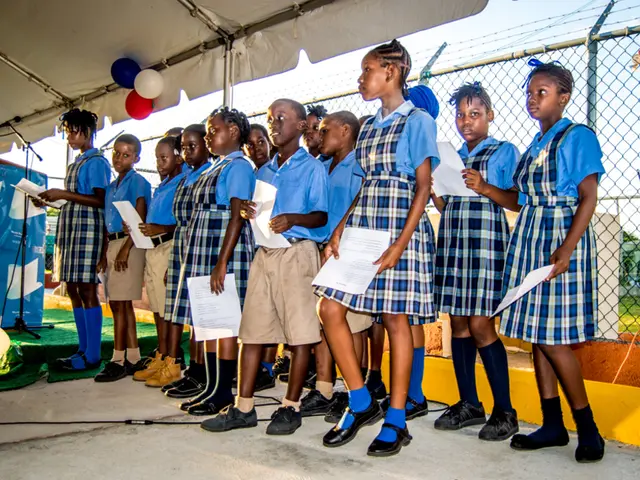Online Radicalization of Teens Unveiled: From Chat Rooms to the Vienna Swift Concert Suspect's Ordeal
In a chilling turn of events, Austrian police recently foiled an Islamic State-inspired plot for an attack on a Taylor Swift concert in Vienna, planned by two men in their mid to late teens. The concert organisers had planned three Eras tour concerts for Vienna, but on Thursday 8 August 2024, all three were cancelled due to the arrests of two main suspects being too close to showtime.
The Institute for Strategic Dialogue (ISD) has reported that simple workarounds are available to reach terrorist content through these accounts, including on Instagram, YouTube, and TikTok. In fact, their analysts uncovered roughly 56 videos or posts accessible through accounts set up for minors that appeared to violate platforms' terms of service, using a handful of English search terms.
The main suspect, a 19-year-old male, aimed to target onlookers outside Ernst Happel Stadium and hoped to "kill as many people as possible." His accomplice, a 17-year-old male, was also arrested. Both suspects are Austrian citizens. Investigators found bomb-making materials at the 19-year-old's home and Islamic State group and al-Qaeda material at the 17-year-old's home.
Extremist groups have been leveraging social media platforms to radicalize young adults and incite violent offenses through various strategies. They use decentralized information sharing on platforms like Facebook and Twitter, creating a broad reach without direct management. Groups like the Islamic State have also adapted to using mainstream platforms by employing fake accounts and innovative content strategies, such as using cartoons to spread their messages.
On Twitter, extremist groups engage in public debates and provocations to mobilize support and create polarizing discussions. Individuals may fall into "rabbit holes," where they are exposed to increasingly extreme content, leading to radicalization.
While specific tactics on Instagram are less detailed, visually engaging content can be used to attract and influence young users. Long-form videos on YouTube can be used to spread detailed ideological messages, creating a more immersive experience for viewers. On TikTok, extremists might use languages like Amharic mixed with European languages to bypass hate speech filters and spread propaganda.
In addition, extremist groups also utilize the dark web and encrypted messaging apps to plan and coordinate activities without detection.
The plot also demonstrates the continued accessibility of terrorist content to minors across popular social media platforms, as previously reported by the Institute for Strategic Dialogue. This worrying trend has led experts to direct new attention towards extremists targeting young adults online, with the objective of inciting them to commit violent offenses.
In 2023, the number of children arrested on suspicion of terror offenses reached a record in the UK, with 19% of the 219 arrests being committed by young people aged 17 or under. A UK counter-terrorism officer warned four months ago about the radicalization of young adults online due to increased internet usage during the COVID-19 pandemic.
An additional arrest was made in connection with the attack, an 18-year-old Iraqi citizen, as revealed by the Austrian Interior Minister. Only 25% of the searched terms were blocked on TikTok, while none were blocked on YouTube or Instagram, according to the ISD.
The Vienna plot drew comparisons to a 2017 attack by a suicide bomber at an Ariana Grande concert in Manchester, England, which killed 22 people. The incident serves as a stark reminder of the need for continued vigilance and the ongoing efforts to combat extremism and protect public safety.
- The Institute for Strategic Dialogue (ISD) found that terrorists are using social media platforms like Instagram, YouTube, and TikTok to reach young adults, with simple workarounds taking advantage of terms that appear to violate the platforms' terms of service.
- In addition to social media, extremist groups have been found using the dark web and encrypted messaging apps to plan and coordinate activities, making it difficult for authorities to detect their activities.
- The trend of extremists targeting young adults online for radicalization and inciting violent offenses was highlighted in the UK, where in 2023, 19% of the 219 arrests on suspicion of terror offenses were committed by young people aged 17 or under.




